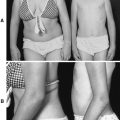Coronary diseases have been on the rise lately for a number of reasons – one big factor is the lifestyle that so many people lead today, with poor diets full of processed foods, a lack of exercise, and high-stress levels that contribute to conditions like obesity and diabetes, which can all impact heart health. There’s also the issue of an aging population, where more people are living longer, and naturally, the risk of heart problems increases as we age. With all these factors combined, it shouldn’t come as a surprise that coronary diseases are becoming more common, which makes the role of coronary revascularization even more critical.
Coronary Artery Bypass Graft (CABG)
Coronary artery bypass graft CABG, is a type of surgery that reroutes blood around clogged arteries, which basically means that doctors create a new path for blood to flow to the heart when it gets blocked up. When someone has severe coronary artery disease, it can be very dangerous since it increases the risk of heart attacks. Surgeons usually take veins or arteries from other parts of the body, like the legs or chest, and those become the new highways for blood to travel. This helps get more blood to the heart and also eases frustrating symptoms like chest pain and shortness of breath. After the surgery, many patients find their quality of life improves, and they often feel much better and return to their daily activities sooner than they expected. And there’s more good news: although recovery might take a little while, research shows that coronary artery bypass graft CABG can significantly reduce the risk of future heart problems.
Percutaneous Coronary Intervention (PCI)
Another noteworthy advancement is the Percutaneous Coronary Intervention, or PCI, which offers a way to deal with narrowed arteries without resorting to major surgery. This technique uses a small catheter, which has a tiny balloon at the tip, and doctors insert this into the blocked artery to open it up. Once it’s in place, the balloon inflates, pushing away the blockages and allowing blood to once again flow freely through the artery, and often, they place a stent, which is a little mesh tube, to make sure that the artery stays open after the balloon is deflated. One of the best parts of this procedure is that patients usually bounce back to their normal routines within a week or two.
Hybrid Coronary Revascularization (HCR)
Hybrid Coronary Revascularization, or HCR takes the best of both CABG and PCI and combines them to tackle more complex cases of coronary artery disease. This approach allows doctors to perform a CABG on some arteries while they use PCI techniques on others, which gives patients a less invasive option that still effectively addresses multiple blockages. Patients who go through HCR often find they need fewer repeat procedures, which is a huge plus and takes a load of stress off their shoulders. Combining the strengths of both CABG and PCI gives healthcare providers a fantastic way to tailor treatments to fit what each patient truly needs, which is very important when it comes to something as serious as heart health. This hybrid approach means that all the best aspects of both surgeries come into play, which allows doctors to create a plan that addresses the specific blockages each patient has. People who have gone through HCR often find that they feel a lot less pain and deal with fewer complications than they might if they had just gone with traditional surgery alone, which is a huge relief for anyone facing heart issues. They usually appreciate being able to bounce back quicker and get back to their normal lives without the intense recovery that might follow a more invasive procedure.
The most exciting aspect of these breakthroughs in heart treatment is that every individual who undergoes any of these procedures receives a new chance at life, and that alone is monumental. It’s incredible to realize that these innovations can lead to a dramatic transformation for someone who may have felt lost or constrained due to their cardiac problems. The prospect of regaining health and vitality offers hope and opens the door to a brighter future, which allows patients to move past their limitations. And, let’s not forget, this positive change also brings joy to their loved ones, and highlights the profound effects of modern medical advancements on heart health.




